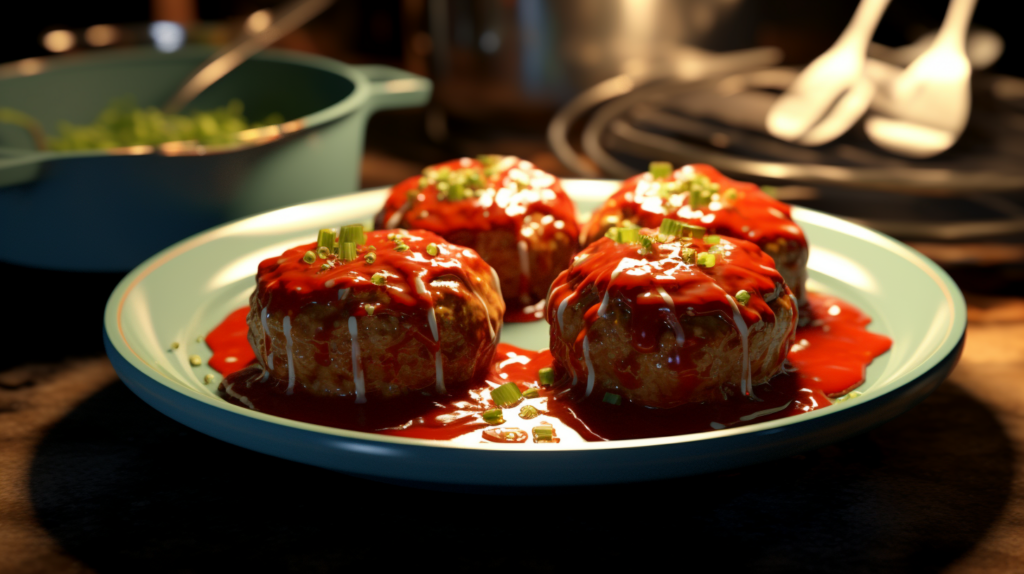Embark on a culinary journey with our Vietnamese Beef Stew Recipe. This aromatic dish brings the vibrant flavors of Vietnam to your kitchen, featuring tender beef, fragrant spices, and a savory broth that’s simply irresistible.

Vietnamese Beef Stew Recipe
Ingredients
- 1 1/2 lbs (700g) beef stew meat cut into chunks
- 2 tbsp vegetable oil
- 1 lg onion diced
- 4 cloves of garlic minced
- 1 inch (2.5cm) piece of fresh ginger minced
- 2 tbsp tomato paste
- 1 tbsp lemongrass paste
- 1 tbsp five-spice powder
- 1 cinnamon stick
- 4 star anise pods
- 3 cloves
- 1 bay leaf
- 2 carrots peeled and cut into chunks
- 2 potatoes peeled and cut into chunks
- 6 cups beef broth
- 2 tbsp fish sauce
- 1 tbsp soy sauce
- Salt and pepper to taste
- Fresh cilantro and lime wedges for garnish
Instructions
- Sear the Beef: In a large pot, heat the vegetable oil over medium-high heat. Add the beef chunks and sear until browned on all sides. Remove and set aside.
- Aromatics and Spices: In the same pot, add the diced onion, minced garlic, and ginger. Sauté until fragrant. Stir in the tomato paste, lemongrass paste, five-spice powder, cinnamon stick, star anise pods, cloves, and bay leaf. Cook for a few minutes until the spices release their fragrance.
- Simmer the Stew: Return the seared beef to the pot. Add the carrots and potatoes. Pour in the beef broth, fish sauce, and soy sauce. Season with salt and pepper. Bring to a boil, then reduce the heat to low, cover, and simmer for 1.5 to 2 hours, or until the beef is tender.
- Serve: Remove the cinnamon stick, star anise pods, cloves, and bay leaf. Serve the Vietnamese Beef Stew hot, garnished with fresh cilantro and lime wedges.
Notes
- Choosing the Right Cut: While beef stew meat is convenient, consider using tougher cuts like chuck roast or beef shank for even more flavor and tenderness. Just be sure to trim excess fat.
- Toasting Spices: Toasting the spices before adding them to the stew enhances their aroma and flavor. Simply heat them in a dry pan until fragrant, then grind or use whole.
- Fish Sauce Variation: Experiment with different brands of fish sauce to find your preferred level of saltiness and umami. Some brands may require less quantity.
- Adjust the Heat: If you enjoy a spicier stew, add a thinly sliced red chili or a pinch of red pepper flakes during the simmering process.
- Potato Size: Cut the potatoes and carrots into uniform chunks to ensure even cooking. Smaller pieces will cook faster, while larger chunks may require extra time.
- Lid or No Lid: Cooking with the lid on retains more moisture and results in a saucier stew. Cooking with the lid slightly ajar can help reduce the liquid for a thicker consistency.
- Make it Gluten-Free: Ensure the fish sauce and soy sauce you use are gluten-free if you have dietary restrictions. Some brands may contain wheat-derived ingredients.
- Make Ahead: Vietnamese Beef Stew tastes even better when made in advance. Store it in the refrigerator and reheat gently before serving to allow the flavors to meld.
- Garnish Creatively: Besides cilantro and lime wedges, consider garnishing with fresh Thai basil, bean sprouts, or sliced scallions for added depth and freshness.
- Accompaniments: Serve the stew with a side of steamed jasmine rice, crusty baguette, or rice noodles for a complete Vietnamese dining experience.
- Freezing: This stew freezes well. Store in airtight containers, leaving some space for expansion, and freeze for up to three months. Thaw and reheat when needed.
- Double Batch: Making a larger batch is a great idea; leftovers are just as delicious and make for an easy weeknight meal.
Why Make Vietnamese Beef Stew Recipe?
Creating this flavorful dish allows you to experience the authentic taste of Vietnam in the comfort of your home. It’s a hearty and satisfying meal that’s perfect for cold days or when you crave the exotic flavors of Southeast Asia.
How Difficult Is It To Make Vietnamese Beef Stew Recipe?
While it may seem complex due to its rich flavors, this recipe is surprisingly easy to follow. With simple techniques and readily available ingredients, you can impress your taste buds without a culinary degree.
How Does Vietnamese Beef Stew Recipe Taste?
Vietnamese Beef Stew offers a symphony of flavors. The tender beef absorbs the aromatic spices and melds with the savory-sweet broth. The lemongrass adds a citrusy zing, and the combination of herbs and lime at the end provides a refreshing contrast.
FAQs (Frequently Asked Questions)
1. Can I use different cuts of beef for this stew?
Yes, you can use cuts like chuck roast or beef shank. Choose cuts with some marbling for the best results.
2. Is lemongrass paste readily available, or can I use fresh lemongrass?
Lemongrass paste is convenient and available in many grocery stores. If using fresh lemongrass, finely chop one stalk and add it with the aromatics.
3. Can I make this stew in advance?
Yes, Vietnamese Beef Stew often tastes even better the next day as the flavors continue to meld. Just reheat gently before serving.
4. What can I serve with Vietnamese Beef Stew?
Common accompaniments include steamed jasmine rice, crusty bread, or rice noodles for a hearty meal.
5. Can I adjust the spice level to my preference?
Absolutely! If you prefer a milder stew, reduce the amount of five-spice powder or remove some of the star anise pods and cloves before serving.
Take The Plunge In This Vietnamese Beef Stew Recipe
In the heartwarming bowl of Vietnamese Beef Stew, you’ll find not just savory broth and tender beef but a taste of Vietnam’s rich culinary tradition. With the fragrance of aromatic spices and the comfort of slow-cooked goodness, this recipe brings a piece of Southeast Asia to your table.





